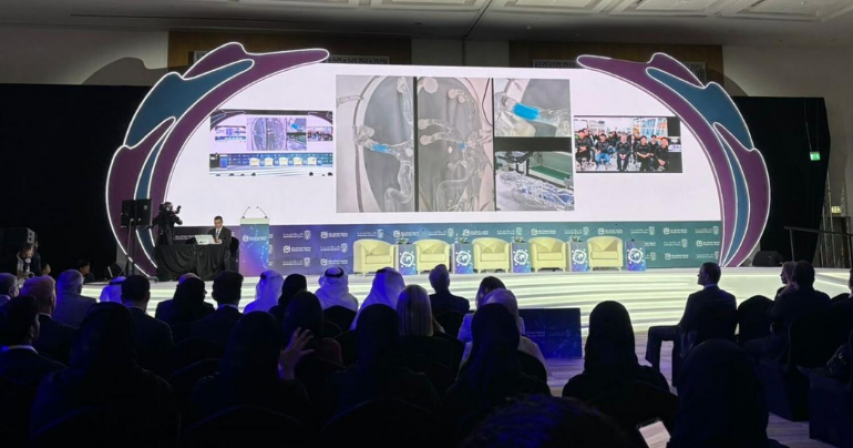World's first public telerobotic surgery trial performed for stroke

First public trial of telerobotic surgery for stroke conducted by a doctor in the United Arab Emirates, 7,000 kilometers away in Korea
When all necessary approvals are in place from regulators, the first clinical trial should begin next year.
Need a personal trainer? Transformation coach in Dubai offers limited guidance
Approximately seven thousand kilometers away in Seoul, South Korea, a doctor in Abu Dhabi was able to successfully conduct a live telerobotic surgery trial on a model for the treatment of emergency strokes, providing a glimpse into the future of healthcare.
Crescent Enterprises of Sharjah, United Arab Emirates, owns a stake in XCath, an early-stage medical device company focused on growing robotic systems for endovascular treatment, and the company demonstrated the groundbreaking achievement.
In the final day of Abu Dhabi Global Healthcare Week (ADGHW), which was organized by the Abu Dhabi Department of Health (DoH), a seasoned neurosurgeon named Dr. Vitor Mendes Pereira carried out a mechanical thrombectomy on a dummy patient. This procedure involves quickly removing blood clots from the brain following a stroke. Within minutes of beginning the public presentation, Dr. Pereira had passed through the 'patient's' arteries and removed the blood clot that would later cause the stroke.
"We conducted the first-ever telerobotic mechanical thrombectomy trial using our neuro-endovascular robot located in South Korea, which was 7,000 kilometers away from the surgeon's console in Abu Dhabi," explained Eduardo Fonseca, CEO of XCath, in an interview with Khaleej Times following the demonstration.
Fonseca talked about Dr. Vitor Pereira, the director of Endovascular Research and Innovation at St. Michael's Hospital, University of Toronto, Canada, who is known as the "neurosurgeon who performed the world's first neurovascular robotic procedure (in 2019)." Dr. Pereira successfully removed a clot using only telerobotic means.
Revolutionary robotic surgery using
While the silicone model and bedside unit were located in Seoul, Dr. Pereira executed the robotic operation with the help of a robotic controller. Stryker AXS Infinity LS, Trevo Trakb21, and Trevo NXT were the neurovascular devices utilized. The robotic controller and the bedside unit communicated through a regular conference Ethernet connection that could be 5G redundant, instead of using dedicated lines. After the operation, patients reported latency times averaging 160 ms, with a range of 153–170 ms.
Time is of the essence with this treatment. Fonseca made the point that only a tiny fraction of patients in industrialized nations have access to treatments like mechanical thrombectomy, and that every minute that a patient does not receive this treatment is equivalent to nearly 2 million brain cells lost. On the other hand, patients in even the most remote and impoverished regions of the world will be able to access medical treatment thanks to robotics.
Strokes are the top cause of death and disability globally, with 15 million patients, 6.6 million deaths, and 50% of stroke survivors left chronically disabled. "Our vision is for this technology to be able to democratise care to this new miraculous treatment, and be able to save patients' lives by allowing care to be closer to them," Fonseca said, emphasizing the severity of the disease.
"Healthcare systems around the world are overwhelmed by it. To give you an idea of scale, treating stroke survivors accounts for 0.6% of global GDP, or $721 billion annually.
Fonseca disclosed that, subject to regulatory approvals, the first clinical case is anticipated to be conducted next year; however, the process is expected to be lengthy.
It's our reality that thousands of lives go down the drain every day because this technology isn't widely accessible and affordable. This clinical reality is something that we are working very hard to achieve," Fonseca said.






Comments